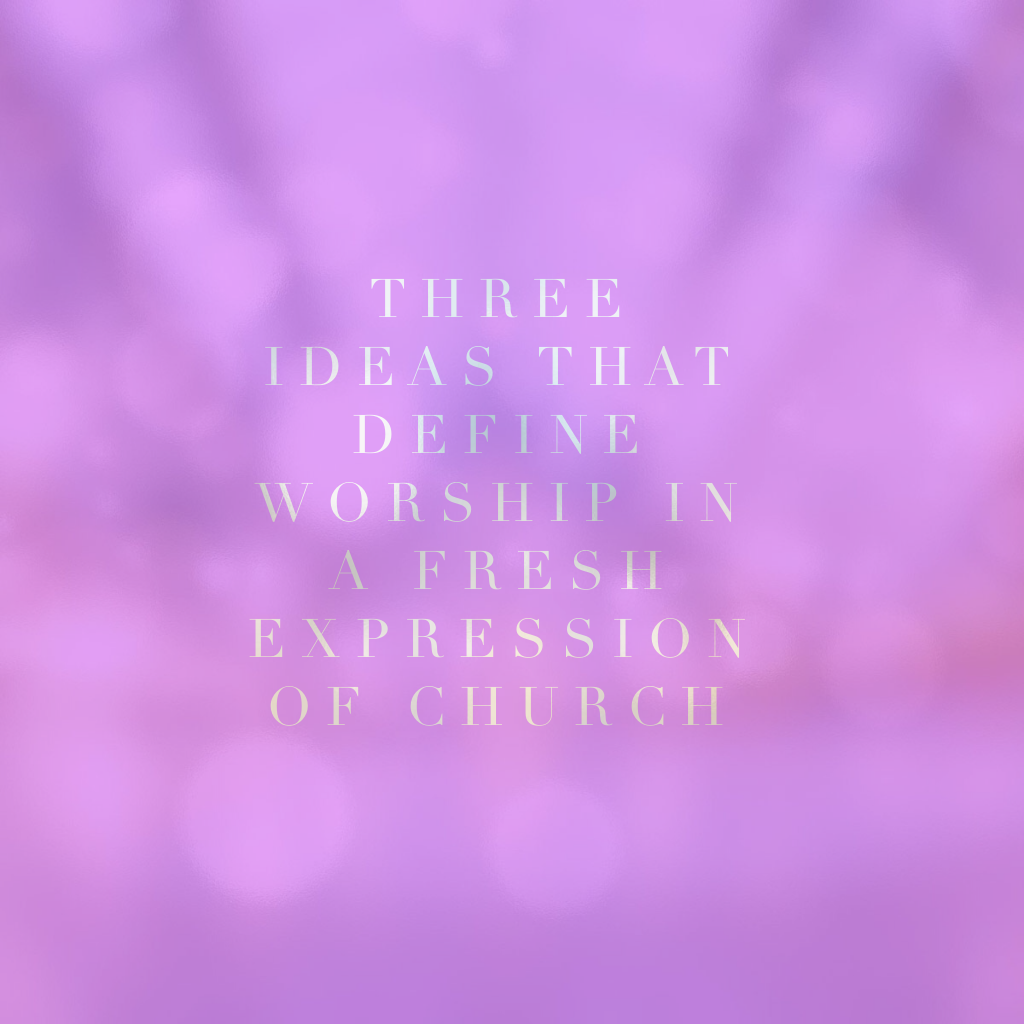wor·ship n. ˈwər-shəp
: the act of showing respect and love for a god especially by praying with other people who believe in the same god : the act of worshipping God or a god : excessive admiration for someone
Definitions are important. Without them as a reference to remind us of original meanings, it’s easy for experiences, interpretations, and people in our lives to add in their own accessory elements, sometimes covering and cluttering what a word was initially supposed to mean. Then, like a garage originally intended to house lawn equipment, it becomes difficult to sort through and discard those unnecessary and even misleading ideas that have taken residence in our brains for so long.
Three Ideas that Define Worship in a Fresh Expression of Church
If you ask a group of a pastors and church members to illustrate worship, most would describe a service. A meeting. A gathering in a sanctuary, fellowship hall, school auditorium, movie theater, house, or some other location. Some might talk about music—with the added words “traditional” or “contemporary.” Others would mention a sermon or message, prayers, offering, scripture reading, and communion or baptism.
For churched people, those are often the expectations. But for people who will never attend our services, yet might become part of a fresh expression of church, what does worship look like? How do we reflect the core definition and elements of worship without getting caught up in the accessories when we are starting a fresh expression of church?
Worship is not the first step in starting a fresh expression of church.
Tweet this.
Worship is ultimately both an attitude and act of showing love and respect for God. In regards to fresh expressions of church, we have to remember three things concerning worship:
1. Worship is not the first step in starting a fresh expression of church.
Unlike many church planting methods that emphasize the launch of a worship service as the starting point , fresh expressions begin through the process of listening, loving and serving, building community, exploring discipleship, and church taking shape. Listening and being sensitive to the Spirit take priority over making a plan and executing a strategy.
Hazelwood Hope is a good example of a fresh expression in Pittsburgh that was started by a group of neighbors serving those on their block before they even turned into a weekly gathering. Many of the people reached through a fresh expression do not have experience of a worship service—or if they do, they were badly burned by it. Think about the teenage skateboarder you see on the corner, the mom next door, and your favorite barista who have never been in a worship service—would the foreign world of songs, sermons, and prayers make any sense to them or make them feel more like outsiders?
2. Worship is a sacrificial way of living
Should the goal of a fresh expression of church be to start a worship service with the group of people who are gathered? The answer is “maybe.” Turnaround Cowboy Church, Biker Church, and The Chosen are fresh expressions that have led to a worship service with music and a message—but even those are tailored to the unique character of those who have gathered. Other fresh expressions such as Convergence and The Neighborhood Café meet around art and food, respectively, yet continually connect people with God and with others.
The main goal for worship in a fresh expression is that respect, love, and admiration for God become engrained as a new way of life. In Romans 12:1 Paul illustrates worship as a sacrificial life, not as a service. Worship is an attitude that is lived throughout the week, not just in an hour and not just through music or only through the sharing of God’s Word.
3. Worship is only part of the mission of a fresh expression of church.
Those of us who serve or participate in an established church usually have it engrained in us that worship is the ultimate means of glorifying God and should be at the center of church life. So much of church life revolves around worship that other things, like community building and mission , take second and third place.
We forget that four things happen when Jesus is at the center of a gathering of people: growth UPward towards God;
growth INward in fellowship;
growth OUTward in mission;
growth in the sense of being part OF the whole body of Christ.
The book of Acts emphasizes the mission and unique community of the early church, not its style of worship. In fact, worship comes as a response to God’s creative power among his people as they are drawn together, participating in his work.
As worship develops in fresh expressions of church, it may be integrated within a meal, game night, coffee gathering, or support group meeting. It may be shared with the homeless, worship might start as a discussion on the running trail about where you saw God at work this week, or concluding a meal among neighbors with a prayer or reading of a psalm.
Worship might begin with a praise song, a hymn, a secular song, or no music at all. There might be candlelight, sunlight, fluorescent lights, or darkness. All of these ways of worship can be used to show God love and respect amid community. All can serve as a means of saying thank you to the one and only God from a group of people who have been introduced to him through a fresh expression of church.


